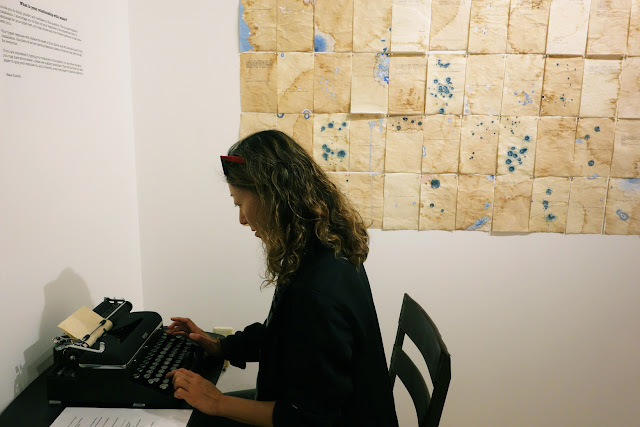My friend, Gregg sent me a bunch of questions last week. He's a curious goat.
What
kind of colors are mineral pigments?
Colors of mineral pigments are, in
general, more vivid than western watercolor. They come in all sorts of colors.
I mostly use modern version of mineral pigment called gansai, which works just
like watercolor.
Mineral pigments are already bound with adhesive agent, so you
can just add water to use them. It’s much easier to use compared to iwaenogu
which is the traditional mineral pigments. I used iwaenogu for the background
of “Farewell” series.
 |
| Mineral pigment (gansai) |
What
is it like to work with mineral pigments?
Mineral pigments are a special mixture
of pure pigment made from pulverized mineral stones and adhesive to bind the
color to the paper. I think similar to watercolor, you’re always paying
attention to how much water you want to let your brush absorb before mixing it
with the pigment. The amount of water you use to dilute or mix the color
dictates the opaqueness. In a way, you’re working with water. With gansai, if
you apply too much pigment or too many layers, the surface becomes shiny.
You work with layer in iwaenogu. First, you need to grind some pigments (suihi) before you can mix with nikawa, an adhesive agent. If the pigments are very fine, you don't need to grind them. Pigments come in all sorts of sizes.
Iwaenogu is challenging and labor
intensive, but I like the richness of the colors and the preparation before
applying these pigments. It is a ritual. You have to have a lot of free time to
be able to use this medium, however. When I have a regular job, it is nearly
impossible to use this medium in my work, because it demands so much more time
just for the preparation.
Why
them and not acrylics or watercolor or oil?
I feel at home using this medium even
though I didn’t start using it until after I graduated from college. I never
used it when I was in Japan. My mother sent me a set of gansai when I was
teaching myself Japanese brush painting after college. I got a teaching job
teaching brush painting at a local museum. I had never done brush painting. But
I was qualified. I’m Japanese, I’m sure that’s what they thought, a Japanese
person teaching a Japanese brush painting surely sounds more convincing for
students. As a child, I studied Japanese calligraphy lessons for ten years. I
knew how a brush and sumi ink work. So, I said yes when I was asked if I could
teach Japanese brush painting. Why not? Then, I had to have my mother sent me
all sorts of books and materials. That’s when I discovered mineral pigment, gansai.
I think I was still using acrylics in my work then, but eventually I gravitated
towards mineral pigment because of their beautiful vivid colors. Brushes are very similar to the ones I used for Japanese calligraphy.












































